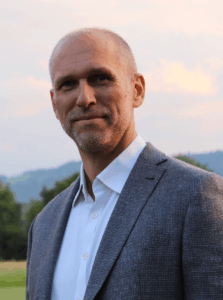When asked to assess how to ensure future resilience in an ever-changing market, Lynn Challenger, global head of trading and order generation at UBS asset management, made his case for a new perspective – buying before building.
 “You don’t need to spend years and a lot of money trying to build […] these technologies exist already, they’re out there. You’re better off buying something.”
“You don’t need to spend years and a lot of money trying to build […] these technologies exist already, they’re out there. You’re better off buying something.”
He explained that when it comes to future proofing, this approach could be a key way to ensure that a firm’s technological investments remain constant even when, or if, revenues dip.
“One of the benefits of buying before you build is that an order management system or technology may be with you for 10 to 15 years, maybe even longer than that up to 20 years [and] if your revenues at the front take a dip, the first thing the president of your company is going to do is hit IT budget and potentially cut your big developers.”
When this happens, a firm can find itself in a situation where their product lacks the necessary support to run effectively, Challenger added.
He also went one step further, and suggested that despite the industry’s focus on functionality, there is a case to be made for prioritising architecture.
The notion of architecture over functionality, he explained, is linked to the future-proofing. When a firm looks at technology and its function, they are focused on what the system can do today and giving users what they need at this present moment.
Nevertheless, if firms are set to continue viewing technology as a 10 or 15-year investment, it needs to be able to change as time goes by and adapt with users.
Challenger asserted: “Thinking about the architecture of the order managed system or the EMS is critical. At my own firm [UBS AM] I’ve got two pieces of technology. For one, every time I want to make a change it’s a nine month process and a million dollars, and the other one is a two week cycle and we get it for free. That’s because of the way the system is architected, how they can actually implement that change and how they can drive it.”
The need for innovation in a market steeped in legacy systems and operations is clear as it becomes increasingly apparent that if firms fall behind, they will stay behind.
Read more – New study of post-trade ecosystem shows pain of legacy systems
“Excel is fast food, right? It’s fast, it’s easy, it’s cheap, and it tastes really good. But you can’t live on this stuff, and eventually it’ll slow you down,” explained Challenger.
Elsewhere, the key-note address highlighted the benefits of empowering desks to lead the charge as technological developments continue to pick up pace. Talented traders are those highly cognisant of what the key issues are and importantly, what they need in order to address this.
“If you can empower them to help you enact that change, then you’re going to actually expand your resources and drive change fast. If you tap into a person and say ‘okay, well, now you’re in charge, you fix it’ and give them the resources to do that and help them fix it all of a sudden, they become empowered and start to enjoy their job because all the problems they’re actually able to fix themselves.”
Read more – Trade TV: UBS AM’s Lynn Challenger on adapting to T+1
Challenger emphasised that getting the trading team involved in the changes being made is a key way to not only drive change faster, but ultimately, reach goals quicker.